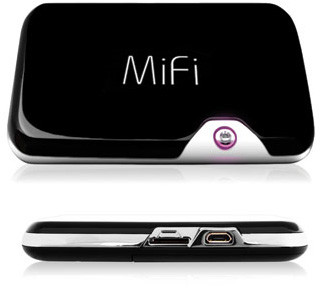AT&T officially loses over 10 years of my business
Tags: 3G, AT&T, blackberry, mifi, Novatel, Playbook, tetheringI’ve been an AT&T customer for a very long time; over a decade of mobile phone use with their services, from my age’ing Nokia to my various Treo devices to several RIM BlackBerry phones.
I’m currently on the biggest, baddest Enterprise “Unlimited” data, “Unlimited” texting plan they offer, including International Roaming and texting as well, for when I travel overseas. I also have a second line for data only, which I use in my Novatel MiFi device, a SIM card previously plugged directly into my laptop so I could get online while on the train traveling to/from the office.
I recently picked up a BlackBerry PlayBook to use for work, and have been hacking on it a little bit. One thing that was lacking, was “always-on” Internet service. You have to use WiFi or tethering to get the tablet onto the Internet. In fact, you can’t even use the tablet at all unless it’s connected to a wireless network of some kind.
I just called AT&T to see what the additional cost would be to add “Tethering” to my existing phone features. The cordial operator told me that my current “Unlimited” plan is costing me $30.00/month, and to add the “Unlimited + Tethering” package, it would be $80.00/month (a $50.00/month increase).
I’m floored that I’d have to pay an additional $50/month for something that is no different than using my existing phone to browse the web. In other words, there’s no difference at all in the bits-and-bytes coming across the 3G connection if I browse the web via my phone’s browser, or browse the web via the PlayBook (or my laptop), through my phone’s 3G connection over bluetooth, via tethering.
The operator spoke to her supervisor and came back and told me that if I added tethering to my current “Unlimited” plan, I’d lose the unlimited capability, it would drop to 2GB/month, max, and I could never go back to an unlimited plan ever again, if I changed it now.
Read the rest of this entry »
My First Day with the New AT&T MiFi Device
Tags: 3G, ASCII, file sharing, GUI, http, linux, MAC address, Sprint, Verizon, XML I ordered a Novatel MiFi 2372 from Amazon this week, hoping to decouple my primary laptop from holding the 3G SIM card under the battery while I’m on the train back and forth to the office. I spend 5+ hours a day on the train, and having 100% solid connectivity is a must.
I ordered a Novatel MiFi 2372 from Amazon this week, hoping to decouple my primary laptop from holding the 3G SIM card under the battery while I’m on the train back and forth to the office. I spend 5+ hours a day on the train, and having 100% solid connectivity is a must.
I did a lot of research before deciding on this particular device. The closest competitor was the PHS300 from Cradlepoint, but it had one flaw that the MiFi overcame: I can directly plug my AT&T SIM card into the MiFi, but the PHS300 requires an actual USB dongle + SIM card. AT&T wanted $249 for the empty dongle itself, so that was a no-go.
Some of the sites I found on the web indicate that you can hack the configuration of the MiFi using some undocumented options, found only in the config/backup file. This can turn on or disable some features of the device, not visible or exposed in the MiFi web interface.
This is 100% untrue (at least with the 2372 made for North American carriers/networks).
Two of the features I was most-interested in was the ability to charge it over USB while using the device over wifi. This is not directly possible without modification of the USB cable hardware itself. Luckily I have a USB “Y” cable that has data on one male end and power on the other. If I just use the power end, I gain the same feature, but the configuration option is completely ignored.
The option that some sites suggest is:
<routeroverusb>1</routeroverusb>
The other option I wanted to change was the number of maximum connected devices. Having a hardware-locked limit of 5 devices seems highly restrictive, so I checked into that.. and that too, is not modifiable on the 2372. If I’m on the train and have 2 laptops + my BlackBerry with me, that’s already 3 devices. That means I can’t further share my connection with any more than 2 other devices on the train in the car with me. Bad design.
This option looks like:
<allowedclients>5</allowedclients>
If you look at the MiFi itself, it’s really just a cellphone with built-in WAN routing and NAT. The Android phones can do this out of the box already, but those are larger/more-complex/requires contract. The more I play with the MiFi, the more I realize, I’m just holding a phone in my hand, minus a keypad and screen and speakers.
So here’s my synopsis after less than 12 hours of really beating up the device, with the cons first:
Read the rest of this entry »
